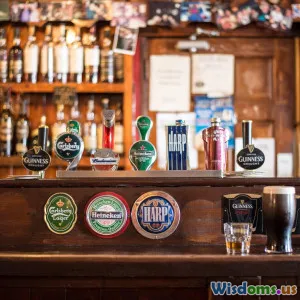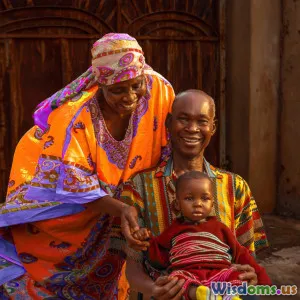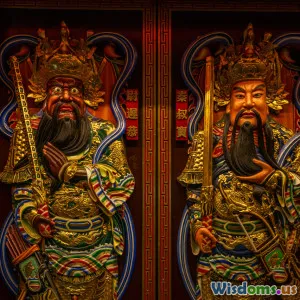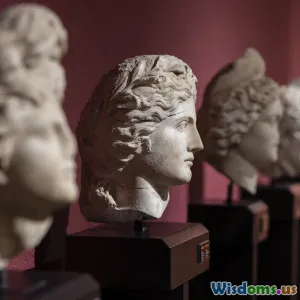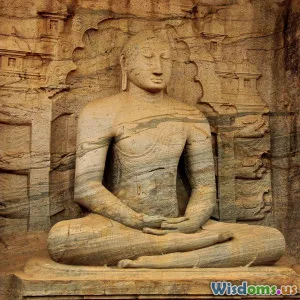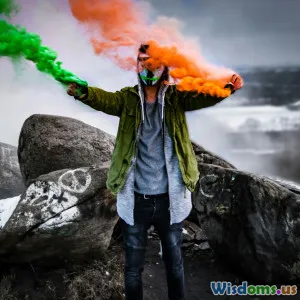
Ten Strange Creatures From Irish Folklore Explained
10 min read Explore ten bizarre and fascinating creatures from Irish folklore with their origins, meanings, and stories explained in-depth. (0 Reviews)
Ten Strange Creatures From Irish Folklore Explained
Irish folklore, woven from centuries of oral tradition, storytelling, and mysticism, offers a treasure trove of strange and captivating creatures that capture the imagination. From mischievous spirits to fearsome beasts, these entities reveal a rich cultural tapestry intertwined with Ireland’s history and landscape. This article explores ten of the most intriguing and bizarre creatures from Irish folklore, explaining who they are, what they symbolize, and why they remain relevant today.
1. The Púca: The Shapeshifting Trickster
Often regarded as one of the most enigmatic figures in Irish folklore, the Púca (also spelled Pooka or Phooka) is a fearsome yet playful creature. Traditionally depicted as a dark horse with glowing eyes, the Púca is a shapeshifter who can also appear as a goat, dog, or even human. Known for both helping and wreaking havoc, the Púca embodies unpredictable nature — one moment an ally, the next a mischievous outlaw.
Example: A well-known legend from counties Kerry and Cork recounts how a traveler rode a Púca only to be thrown into a bog, a dual testament to the creature’s dangerous allure. Interestingly, some scholars interpret the Púca as personifying nature’s wild, uncontrollable aspects, especially the dangers rural folk faced.
2. The Banshee: Harbinger of Death
No stranger to supernatural folklore, the Banshee is a woeful female spirit whose piercing cry foretells death within a family. The traditional image is a ghostly woman with long white or silver hair, dressed in a flowing gown. Her screams weren’t heard lightly; families took them as ominous warnings of imminent loss.
Historical Insight: Seán Ó Súilleabháin, a notable Irish folklore scholar, documented numerous accounts of bereaved families hearing Banshee wails hours before a death. Banshees often tie to specific clans, such as the O’Briens or the O’Connors, suggesting a personalized cultural belief that death spirits were linked intrinsically to bloodlines.
3. The Dullahan: The Headless Rider
Among the more terrifying figures, the Dullahan rides a black horse without a head while carrying his own severed head under one arm. This grim rider is said to summon death by pointing a whip made from a human spine.
Cultural Role: The Dullahan is often seen heralding death or change. According to folklore, when the Dullahan stops riding, someone dies, making it an unavoidable omen. Townspeople would traditionally close doors and windows tight to keep this apparition out.
4. Selkies: The Seal-Mermaid Hybrids
Originating from the coastal communities of Western Ireland, Selkies are mystical beings that live as seals in the ocean but can shed their skins to become human on land. These creatures symbolize the longing for freedom and the tragic consequences of being caught between two worlds.
Realism Meets Myth: Accounts recount fishermen who captured a Selkie by hiding their sealskin, compelling the Selkie to marry. Yet, when the Selkie found her skin again, she would return to the sea, leaving husband and children behind. This tension reflects human struggles with identity, captivity, and belonging.
5. The Changeling: The Swapped Child
Irish folklore recounted beliefs about changelings — fairy children left in place of human babies stolen away by the fairies, or Aos Sí. These changelings would often display abnormal behavior or illnesses that baffled families. The myth served to explain infant illnesses and congenital disabilities during times when medicine was rudimentary.
Social Context: Stories surrounding changelings also underscore societal anxieties and attempts to rationalize unexplained tragedies and imperfections in children. Often, families would perform rituals or invoke holy relics to identify or expel changelings.
6. The Merrow: Ireland’s Enchanting Sea Folk
Distinct from the Selkie, Merrows are mermaid-like creatures with a fish’s lower body and sometimes a red cap known as the "cohuleen druith". Unlike the often tragic Selkie folklore, Merrows could be both benevolent and curious. They were known to abduct humans or charmed suitors.
Folkloric Anecdotes: Folklorist Thomas Keightley recorded tales where Merrows’ enchanting songs lured fishermen away, occasionally marrying them. Their red caps were said to give them the ability to travel between sea and land — shedding the cap would result in being unable to return to water.
7. The Cat Sí: The Fairy Cat
In Irish lore, the Cat Sí (pronounced “Shee”) or fairy cat is a large black feline creature with wild glowing eyes. It roams the countryside and is sometimes seen as an ominous sign or a guardian of fairy mounds.
Cultural Significance: The Cat Sí’s ambivalent nature has been interpreted as a symbol of mysterious otherworldly powers that roam freely, accessible only to those attuned to the supernatural. It may ward off evil spirits or be a dangerous predator.
8. The Drekavac: Echoes from the Otherworld
Though more prominent in Slavic legends, the Drekavac has found echoes in Irish stories as a shrieking spirit associated with restless souls. In Irish contexts, similar creatures exist in describing souls of unbaptized children or the restless dead.
Anthropological Perspective: The belief in shrieking childlike spirits taps into themes of guilt, death, and innocence lost. These myths often act as cautionary tales rooted in social or religious values concerning life, death, and the afterlife.
9. The Amadan Dubh: The Dark Fool
Less a creature and more a trickster archetype, Amadan Dubh is sometimes described as a shadowy figure resembling a grotesque clown or foolish spirit causing chaos. His mythology often intersects with other fae to introduce unpredictability.
Literary Importance: This character reminds us of chaos in the natural order and the cultural function of folly in teaching humility and respect for the supernatural world.
10. The Fear Gorta: Hunger Personified
The Fear Gorta, or “man of hunger,” is a terrifying spirit that wanders the land, appearing during times of famine. Modeled as an emaciated figure, it symbolizes starvation and is said to curse or reward based on charity shown.
Historical Roots: The Fear Gorta story is a haunting reflection on the Irish Potato Famine and periodic famines that shaped Ireland’s history. Tales often encouraged empathy, warning listeners of the dire consequences of greed or neglect during hard times.
Conclusion: The Enduring Power of Irish Folkloric Creatures
These ten strange creatures from Irish folklore offer a window into Ireland’s rich cultural past, combining elements of caution, morality, and mystery that resonate even in modern times. They encompass a wide spectrum of human emotions: fear, hope, loss, and the quest for identity and connection. Beyond mere stories, these entities reflect lived realities of historical struggles with nature, death, and social order.
Whether it’s the eerie wails of the Banshee or the sympathetic, tragic Selkie, these mythical beings stand as reminders of folklore’s essential role in preserving cultural memory and teaching life lessons. Exploring these creatures not only entertains but also enlightens us about the human condition through the ages.
Embracing these legends can inspire appreciation for Irish heritage and encourage the preservation of oral traditions that keep the magic of folklore alive.
References and Further Reading:
- Ó Súilleabháin, Seán. Irish Folklore and Myths.
- Keightley, Thomas. The Fairy Mythology.
- Briggs, Katharine Mary. A Dictionary of Fairies.
- MacKillop, James. Myths and Legends of the Celts.
Rate the Post
User Reviews
Other posts in Cultural Studies
Popular Posts










